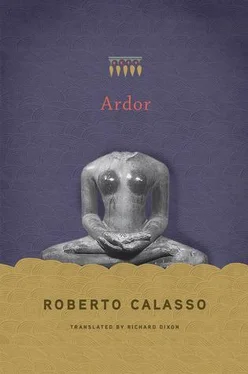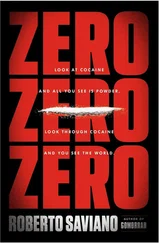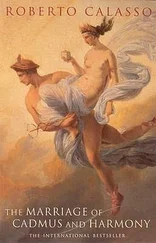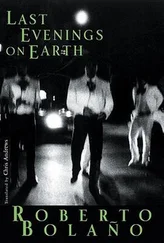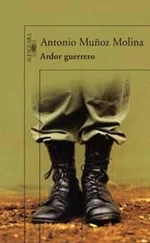The antelope flees because the gods want to sacrifice it (the antelope, in fact, is the sacrifice) — and the antelope knows it is an animal that cannot and must not be sacrificed. The antelope has just two invisible counterparts: the predator and the hunter — two single beings who kill in a flash, with their claws or their arrows, without any ceremonial niceties. They are what is immediate. So the opposite of a throng of beings — the gods — who choose their victim and around it elaborate a long ceremony that has to be performed with a sequence of acts. But in the thinking of the ritualists, using the brilliant words of Malamoud, “when the sacrifice is executed — executed in the sense of carried out — there is an execution, in the sense of a putting to death, not only of the victim but of the sacrificial act itself.” This is why the antelope escapes from the gods. No one tells us what happened after, when the gods chased it. But one day they returned with the black antelope skin. They had killed and flayed it, as hunters do. From that moment on, they never went hunting again. They spent their time contriving and celebrating sacrifices. As for the officiants, they always had to gird their loins with a black antelope skin. Or at least to have one within reach and to touch it, as if to remind themselves of something. Or the person being initiated had to sit on it, as if contact with the ground had to be mediated by those animal hairs, in which they claimed to recognize the meters. Contact with the antelope skin did not only serve to recall that escape and pursuit which none have recounted. But also other pursuits, other flights, of which certain scenes have been described — or mentioned in passing. Two scenes stand out.
Prajāpati approached the body of his daughter Uṣas and, as he touched her, he was transformed into an antelope, as was she. It was then that Rudra shot him with his three-knotted arrow. It looked like a hunting scene — and at that moment Rudra became mṛgavyādha , “he who shoots the antelope.” Prajāpati, who “is the sacrifice,” then rose, wounded, to the sky. He escaped from the gods, his children who had plotted against him. He escaped from Rudra, the Archer, who had shot him at the peak moment of pleasure. The antelope that was Prajāpati ran away, too late, from an attack. This was not part of a ceremony: his children — now his adversaries — simply wanted to kill him, like one of the many beasts of the forest. The sacrifice ran off in the face of pure, instant killing, of the kind that strikes down its prey through the hunter’s hand. And it ran off too late. But Prajāpati had his place to go to: an arc of sky, where he settled and formed a constellation: Mṛga, the Antelope, which the Greeks called Orion. And not just the prey but also the hunter went off toward the sky. The archer became Sirius, the antelope hunter. The three stars that the Greeks called Orion’s Belt formed the three-knotted arrow shot by Rudra. That scene therefore became the background for every other scene. And thus it could illuminate every scene: at night the Antelope, Mṛga, signaled the way, “track,” mārga , for its companions that roamed the forest. From then onward, no one has yet fully understood the meaning of that scene. Still we raise our eyes to contemplate it and discover something new.
So far as the story of men is concerned, one of the meanings was this: hunting is the background to sacrifice. Sacrifice is a response to hunting: it is a guilty act that is superimposed onto the guilt of hunting. Man sacrifices because he has hunted, because he hunts. And he hunts because he recognizes that killing is an irreparable and unsuppressible act, for at least as long as he has been eating meat, imitating the predators that once used to devour him. So he became more powerful, but he also forever exposed himself to the “greatest danger,” which is this: “Man’s food consists only of souls. All the beings we have to kill and eat, all those we have to strike and destroy to make our clothing have souls like us, which do not disappear along with their bodies and have to be pacified, so that they won’t take revenge on us because we have carried away their bodies.” This is what Aua, an Eskimo, told Knud Rasmussen with unequalled clarity. This was the mystery about which no one wished to talk. It raised too much terror — and nothing had managed to cancel it out. It was a blinding threshold, the place of guilt, where ceremonies drove people back each time to commit another guilty act — sacrifice — to heal the first guilty act: killing. The officiant who continually touches the skin of the black antelope throughout the ceremony, with no apparent reason, mysteriously retraces all this, as if the whole of human history were condensed into that gesture. His contact with the black antelope skin seems, above all, to hark back to that part of history that is most remote, most distant, most obstinate.
Then there was another antelope escape. It happened during the sacrifice of Dakṣa, the sacrifice that was the catastrophe latent in every sacrifice thereafter. Dakṣa, the officiant, had not wanted to invite Śiva, the seducer and abductor of his daughter Satī. He wanted the sacrificial order to exist without this god who had gone beyond it. The missing invitation was the cause of the ruin. In all other ways, no one had ever been such an impeccable officiant as Dakṣa — and no sacrifice had ever been prepared with such care and such magnificence. But precision and strict order are not enough. To exclude is something that a sacrifice can never do. If the sacrifice does not embrace everything that exists, it is nothing more than a massacre. Or rather: it becomes a massacre. And so the gods, scourged by Śiva’s fury, found themselves crawling across the ground around the altar, bleeding and suffering. The sacrifice then fled, in horror, together with the fire. This time it was not just because they were about to sacrifice the sacrifice but also because the sacrifice had failed, it had shown itself unable to support everything that is. And so it fled to the sky. Without the sacrificial fire, no rite would now be possible. The antelope was seen rising up from Dakṣa’s altar and rushing toward the sky and into the sky. But there it was reached, once again, by Rudra’s arrow. The sacrifice could be interrupted, suspended, it could escape: but it could not escape being killed. This was the message lodged with the arrow in the flesh of the antelope. A certain observation became inevitable at this point: there is always an urge to escape from the sacrifice. Either because the sacrifice is being performed or because it cannot be performed. Whatever happens, there is no way out of being shot by an arrow. Is this a return to hunting? Or an extension of the sacrifice itself? Is there any need to ask? All that remains is written in the sky — and there the arrow perpetually strikes the antelope. Under that image we live, witnesses to the escape and to the wound.
* * *
Śiva, as successor of Rudra in another eon, maintains a close relationship with the antelope. He is accustomed to sitting on a black antelope skin. The antelope is the only animal, apart from the snake, that Śiva keeps in contact with his body. In bronze statuettes, it is often to be found between the fingers of the god’s hand, ready to rush off. When Śiva wanders in the forest as a beggar, an antelope often approaches him and raises its head toward him, and he offers it leaves with his left hand, while in his right he holds a bowl, which is the skull of Brahmā. Like Rudra, Śiva is called mṛgavyādha , “he who shoots the antelope,” but also mṛgākṣa , “he who has the eyes of an antelope.” He is the hunter and the prey. Not because anyone is able to strike Śiva (how could they?), but because Śiva is the totality of sacrifice: that which is performed according to the rites, close to the village, along with that which takes place according to no rules, in the forest of the world.
Читать дальше
